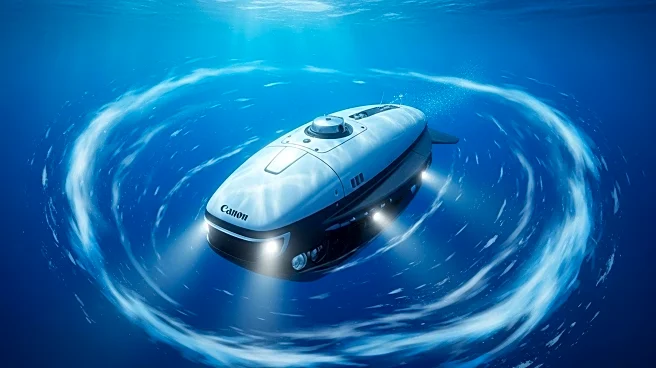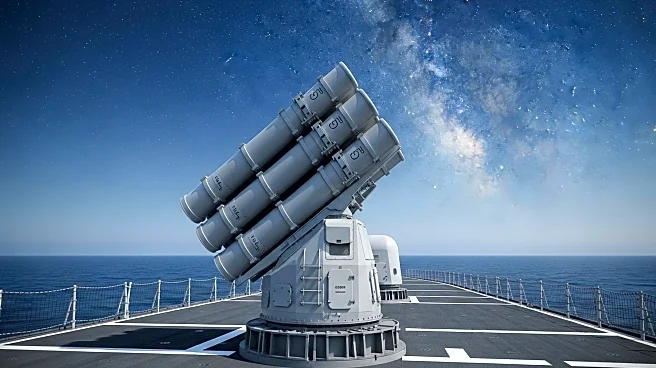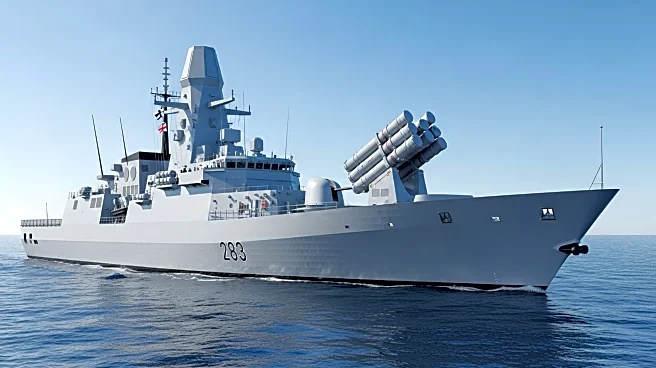What is the story about?
What's Happening?
The UK Ministry of Defence (MoD) has announced plans to achieve initial operating capability (IOC) for a torpedo tube launch and recovery (TTL&R) autonomous underwater vehicle (AUV) system on the Royal Navy's Astute-class nuclear-powered attack submarines. This development, known as Project Scylla, is expected to be operational during the 2026-2027 financial year. The project aims to enhance the submarines' capabilities in seabed warfare, intelligence operations, and covert surveillance missions. The MoD disclosed that successful tests of the TTL&R AUV system were conducted from HMS Astute in May 2025 in the Mediterranean. The AUV, an Iver4 900 medium model, is designed to be launched and recovered through a standard 533 mm torpedo tube, allowing it to autonomously conduct missions without requiring modifications to the submarine platform.
Why It's Important?
Project Scylla represents a significant advancement in the Royal Navy's operational capabilities, particularly in the realm of autonomous underwater operations. By integrating AUVs into their fleet, the UK is enhancing its strategic and tactical flexibility in maritime operations. This capability supports the AUKUS Pillar 2 objectives, which focus on strengthening defense ties and technological collaboration between the UK, Australia, and the United States. The ability to deploy AUVs for intelligence and surveillance missions could provide the UK with a strategic advantage in monitoring and responding to underwater threats, thereby reinforcing national security and defense readiness.
What's Next?
As Project Scylla progresses towards its IOC, further testing and refinement of the AUV system are anticipated. The Submarine Delivery Agency's Autonomy Unit, in collaboration with L3Harris, will continue to develop and optimize the AUV's capabilities. The successful implementation of this technology could lead to broader adoption across other classes of submarines and potentially influence future naval procurement and strategy. Stakeholders in the defense sector will likely monitor the project's outcomes closely, as it may set a precedent for similar initiatives in allied nations.
AI Generated Content
Do you find this article useful?














